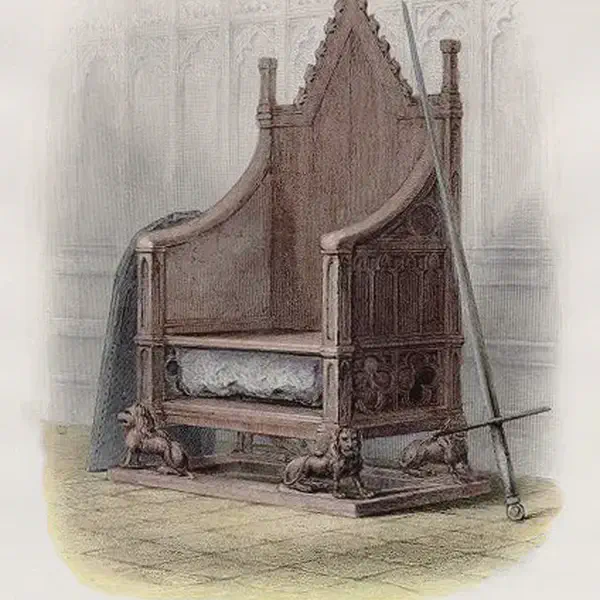
The Stone of Destiny, Stolen on Christmas Day, Was Returned to Westminster Abbey
April 13, 1951
The Stone of Scone, (pronounced scoon) also commonly known as the Stone of Destiny or the Coronation Stone (though the former name sometimes refers to Lia Fáil) is a block of sandstone historically kept at the now-ruined abbey in Scone, near Perth, Scotland. It was used for centuries in the coronation of the monarchs of Scotland, the monarchs of England, and, more recently, British monarchs. Other names by which it has sometimes been known include Jacobs Pillow Stone, Jacobs Pillar Stone, and the Tanist Stone.
On Christmas Day 1950, a group of four Scottish students (Ian Hamilton, Gavin Vernon, Kay Matheson and Alan Stuart) took the Stone from Westminster Abbey for return to Scotland. In the process of removing it from the Abbey, they broke it into two pieces. After hiding the greater part of the stone in Kent for a few weeks, they risked the road blocks on the border and returned to Scotland with this piece, which they had hidden in the back of a borrowed car. The smaller piece was similarly brought north a little while later.
The Stone was then passed to a senior Glasgow politician who arranged for it to be professionally repaired by Glasgow stonemason Robert Gray. A major search for the stone had been ordered by the British Government, but this proved unsuccessful. Perhaps assuming that the government would not return it to England, the stones custodians left it, on April 13, 1951, in the symbolic safe keeping of the Church of Scotland on the altar of Arbroath Abbey.
Once the London police were informed of its whereabouts, the Stone was returned to Westminster. Afterwards, rumours circulated that copies had been made of the Stone, and that the returned Stone was not in fact the original.